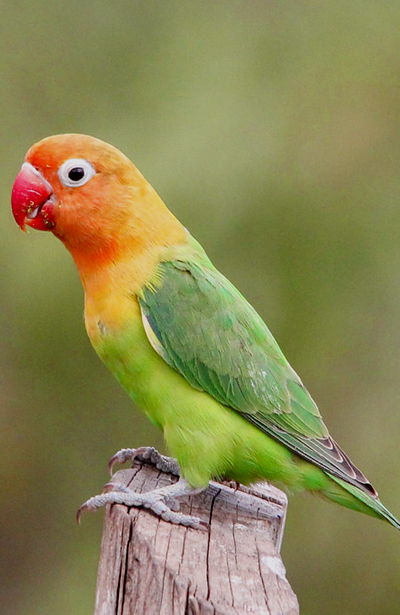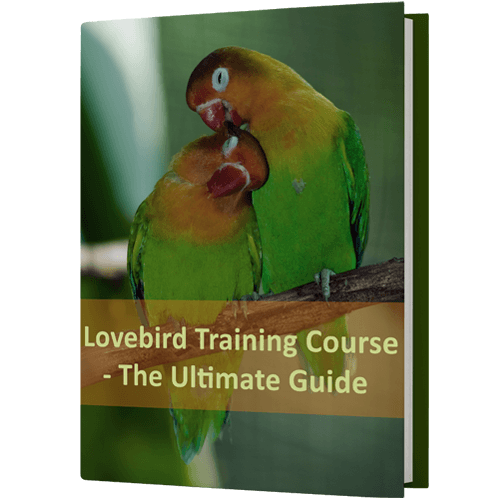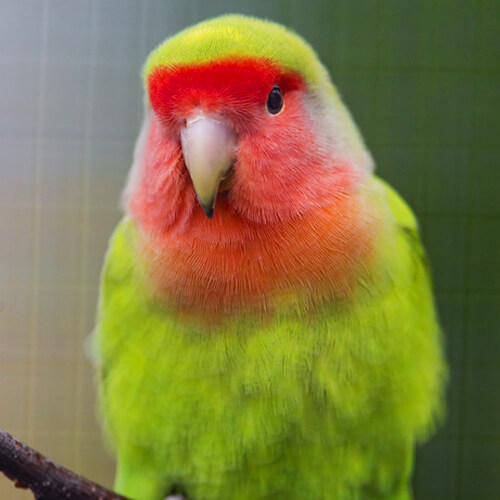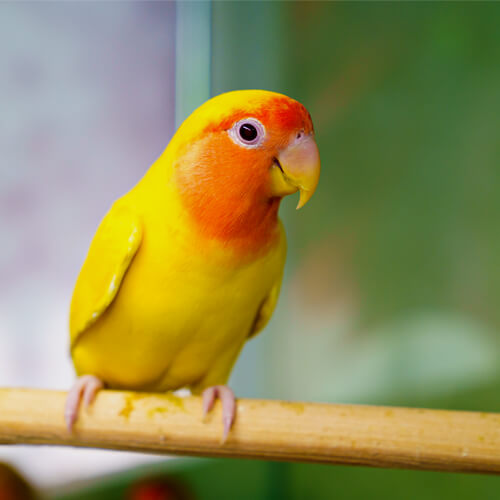
Lovebird Facts & Information From Bird Experts
Lovebirds are the second smallest species of parrot. Their weight range is 42 to 60 grams. Females tend to be slighter larger than the males. Lovebirds are playful by nature and it loves to follow you around on your shoulder.
Sign-up for the Free Course on Lovebird Training
Size: 12 - 16 cm / 5 - 6 inches
Life Expectancy: Upto 15 years
Description
Among Lovebirds, the Peach Face Lovebirds come in a wide variety of color mutations including normal green, Dutch-Blue, Lutino, Pied, Creamino, Cinnamon, and in combinations of the above. Due to the relative ease of breeding in captivity peach-face are quite common in aviaries and in pet stores.


